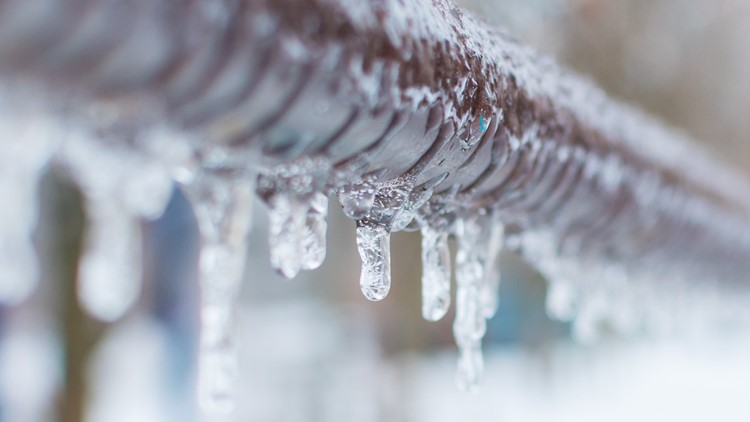Avoiding Frozen Pipes in Winter: Essential Advice
Avoiding Frozen Pipes in Winter: Essential Advice
Blog Article
Almost everyone is bound to have their private opinion in relation to Preventing and dealing with frozen pipes.

Winter can ruin your plumbing, especially by freezing pipes. Right here's just how to avoid it from taking place and what to do if it does.
Introduction
As temperatures decline, the danger of frozen pipes increases, possibly leading to pricey repair work and water damages. Understanding how to prevent icy pipelines is important for house owners in cold climates.
Comprehending Frozen Pipelines
What causes pipelines to ice up?
Pipes freeze when revealed to temperature levels below 32 ° F (0 ° C) for extended periods. As water inside the pipelines freezes, it expands, taxing the pipeline wall surfaces and potentially causing them to break.
Threats and problems
Frozen pipelines can lead to water system disruptions, property damages, and expensive repairs. Ruptured pipes can flood homes and create extensive structural damage.
Signs of Frozen Pipes
Determining icy pipes early can stop them from breaking.
Exactly how to recognize frozen pipes
Search for lowered water flow from faucets, unusual odors or sounds from pipes, and visible frost on revealed pipes.
Prevention Tips
Insulating prone pipes
Wrap pipes in insulation sleeves or make use of warm tape to secure them from freezing temperatures. Focus on pipes in unheated or exterior areas of the home.
Home heating strategies
Keep indoor spaces adequately warmed, particularly areas with pipes. Open cupboard doors to allow cozy air to flow around pipes under sinks.
Protecting Outside Plumbing
Garden tubes and exterior faucets
Detach and drain pipes yard hose pipes before winter. Mount frost-proof spigots or cover exterior taps with shielded caps.
What to Do If Your Pipelines Freeze
Immediate activities to take
If you presume frozen pipes, keep taps open to alleviate stress as the ice melts. Make use of a hairdryer or towels taken in warm water to thaw pipelines gradually.
Long-Term Solutions
Structural modifications
Take into consideration rerouting pipelines far from exterior walls or unheated areas. Include added insulation to attic rooms, cellars, and crawl spaces.
Updating insulation
Buy high-grade insulation for pipes, attic rooms, and wall surfaces. Appropriate insulation aids preserve constant temperature levels and lowers the danger of icy pipelines.
Verdict
Preventing frozen pipes calls for proactive actions and fast reactions. By understanding the causes, signs, and preventive measures, house owners can secure their pipes throughout cold weather.
5 Ways to Prevent Frozen Pipes
Drain Outdoor Faucets and Disconnect Hoses
First, close the shut-off valve that controls the flow of water in the pipe to your outdoor faucet. Then, head outside to disconnect and drain your hose and open the outdoor faucet to allow the water to completely drain out of the line. Turn off the faucet when done. Finally, head back to the shut-off valve and drain the remaining water inside the pipe into a bucket or container. Additionally, if you have a home irrigation system, you should consider hiring an expert to clear the system of water each year.
Insulate Pipes
One of the best and most cost-effective methods for preventing frozen water pipes is to wrap your pipes with insulation. This is especially important for areas in your home that aren’t exposed to heat, such as an attic. We suggest using foam sleeves, which can typically be found at your local hardware store.
Keep Heat Running at 65
Your pipes are located inside your walls, and the temperature there is much colder than the rest of the house. To prevent your pipes from freezing, The Insurance Information Institute suggests that you keep your home heated to at least 65 degrees, even when traveling. You may want to invest in smart devices that can keep an eye on the temperature in your home while you’re away.
Leave Water Dripping
Moving water — even a small trickle — can prevent ice from forming inside your pipes. When freezing temps are imminent, start a drip of water from all faucets that serve exposed pipes. Leaving a few faucets running will also help relieve pressure inside the pipes and help prevent a rupture if the water inside freezes.
Open Cupboard Doors
Warm your kitchen and bathroom pipes by opening cupboards and vanities. You should also leave your interior doors ajar to help warm air circulate evenly throughout your home.

We had been introduced to that article on 6 Ways to Prevent Frozen Pipes from an associate on another web address. Make sure you take a moment to promote this post if you appreciated it. Thank you for being here. Kindly come by our blog back soon.
Course Detail Report this page